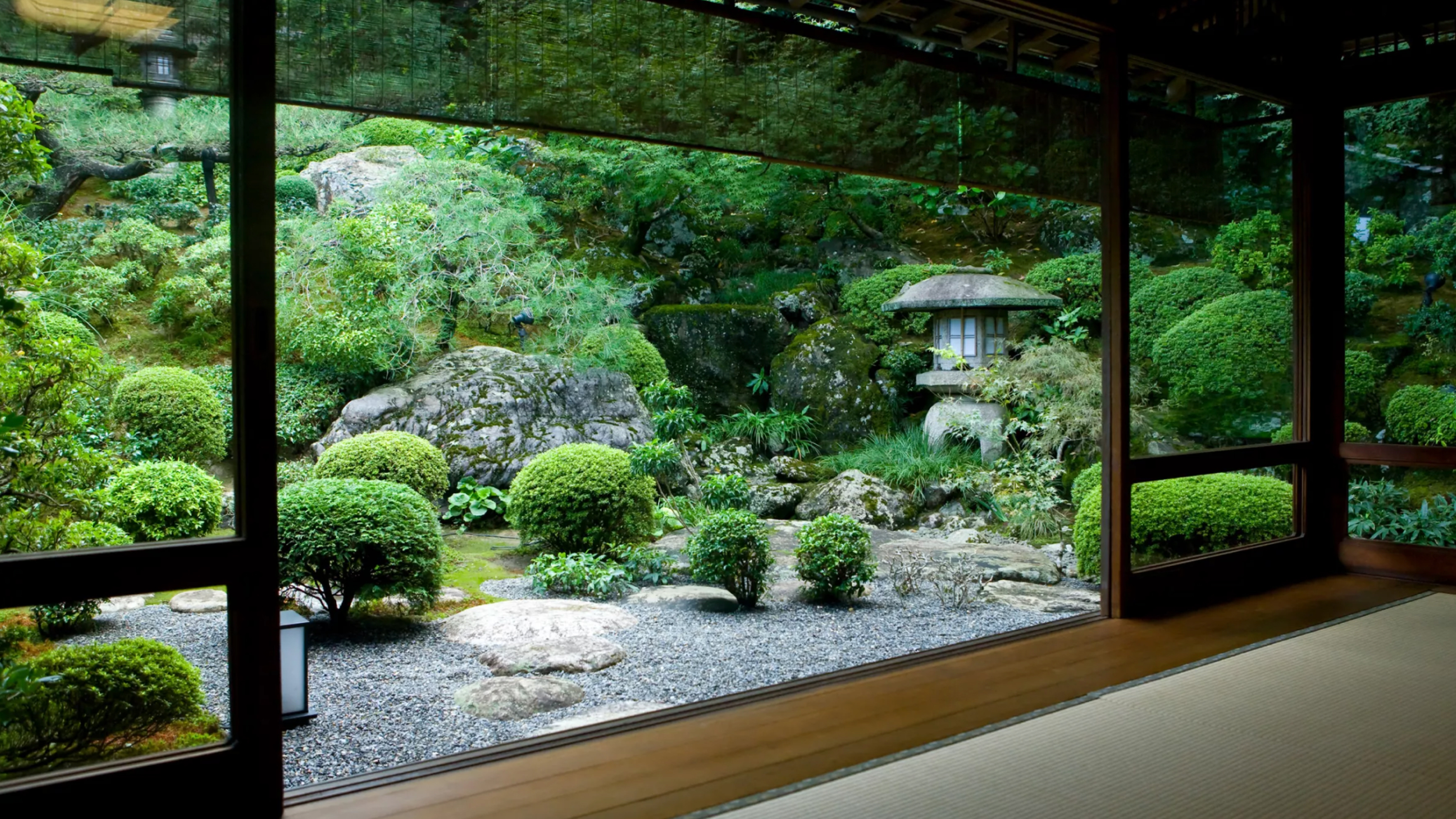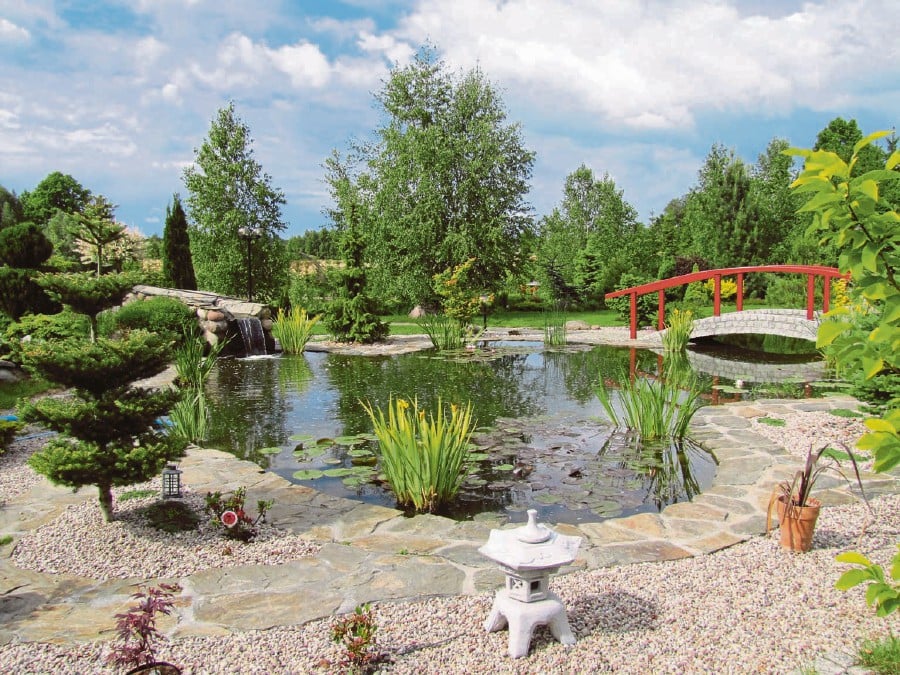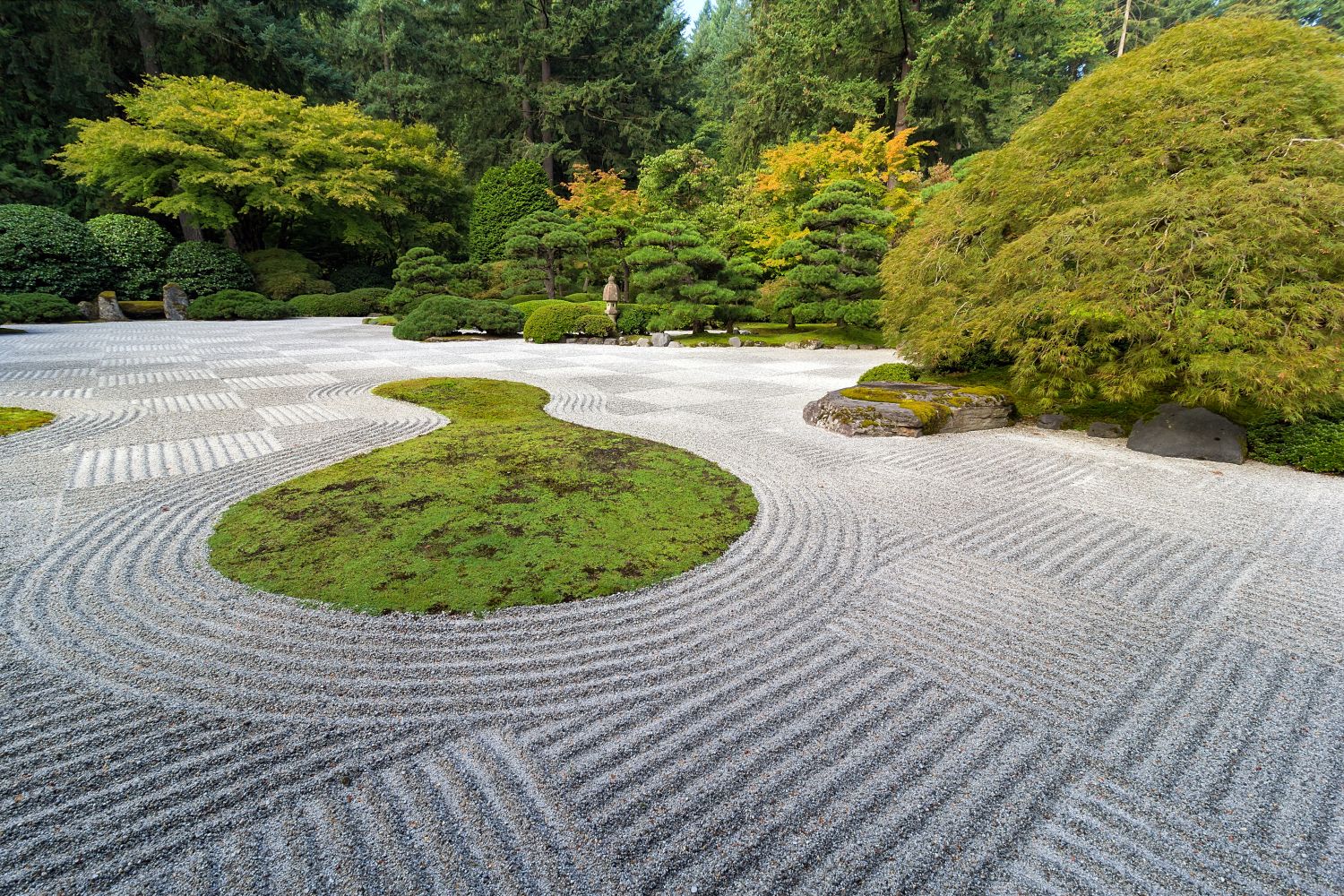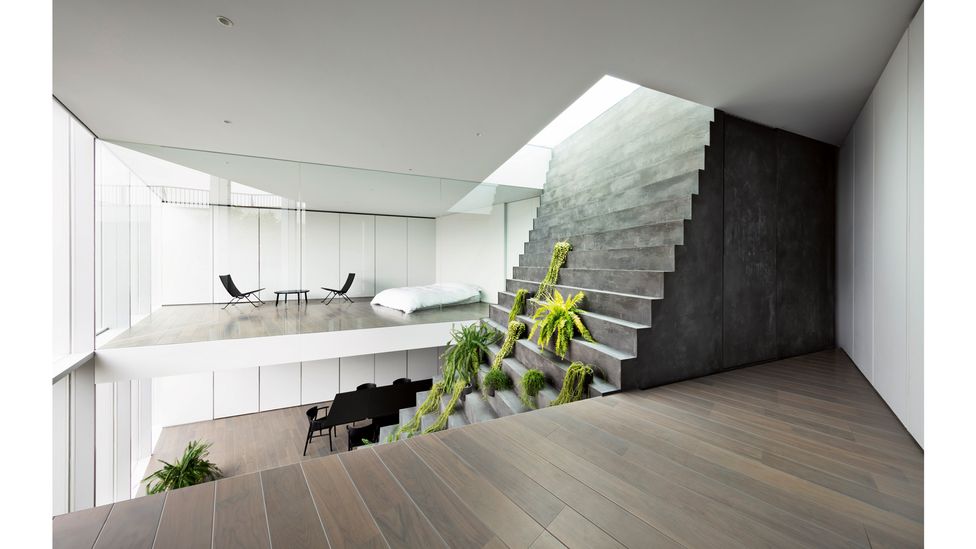Zen Gardens And Minimalism - Cultivating Tranquility Through Simplicity
The practice of minimalism, characterized by the intentional embrace of simplicity and the elimination of excess, finds a harmonious partner in the art of Zen gardens. These serene landscapes, with their carefully arranged stones, raked gravel, and thoughtful placement of vegetation, embody the essence of minimalism in a tangible and contemplative form.
Author:George EvansAug 15, 20233.3K Shares275.7K Views
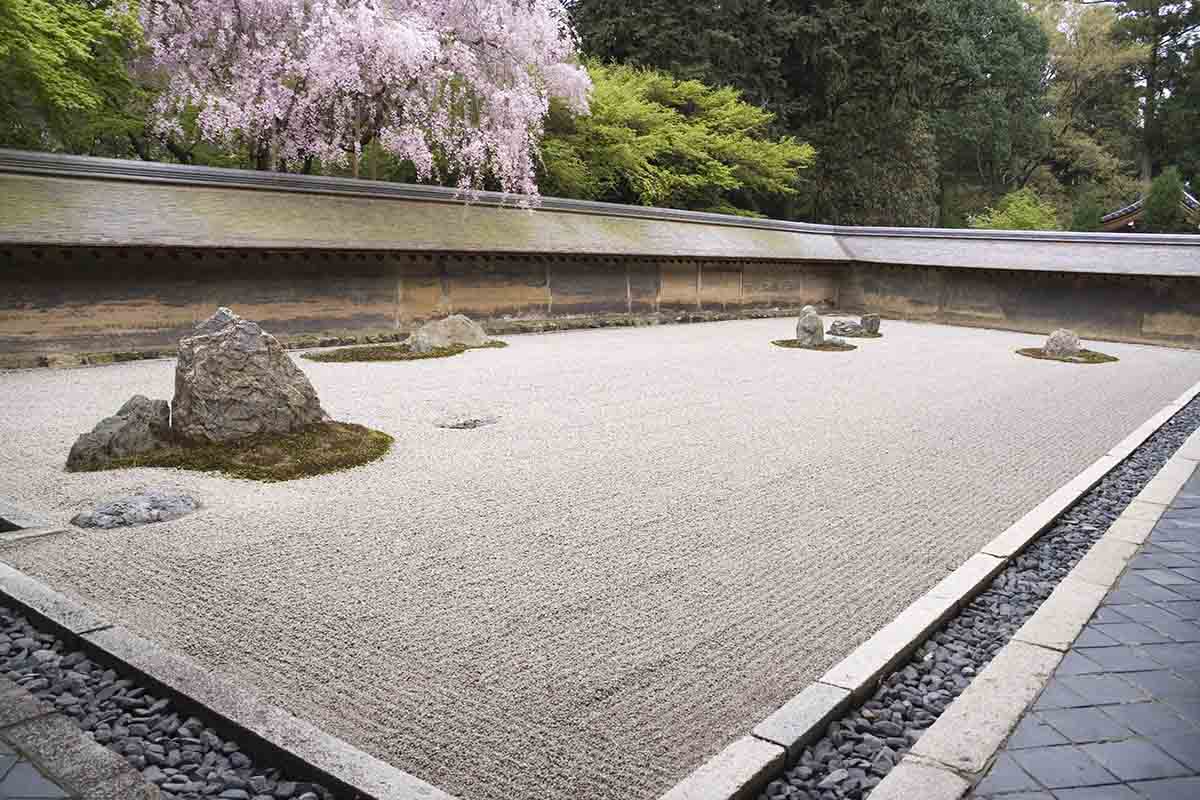
In a world filled with constant stimulation and overwhelming distractions, the allure of simplicity and tranquility has become more appealing than ever. The practice of minimalism, characterized by the intentional embrace of simplicity and the elimination of excess, finds a harmonious partner in the art of Zen gardens. These serene landscapes, with their carefully arranged stones, raked gravel, and thoughtful placement of vegetation, embody the essence of minimalism in a tangible and contemplative form.
The Essence Of Minimalism
Becoming a minimalist is a lifestyle choice that transcends the pursuit of happiness through material possessions. Instead, it is an intentional shift towards finding contentment in the absence of excess.
Minimalist arts and design, renowned for their embrace of "less" and "emptiness," mirror this philosophy by uncovering the unexpected beauty and fulfillment that emerge from subtraction. Although the motivations behind minimalism and minimalist art might appear distinct, they share a common thread of enlightenment through reduction, revealing profound significance within the void created by embracing simplicity.
Grasses In Zen Gardens
In the art of Zen gardens, grasses play a dynamic role that extends beyond their appearance. They are strategically incorporated to convey movement and symbolism, contributing to the garden's serene beauty.
Grasses sway gently in the breeze, introducing an element of motion that complements the garden's stillness. Tall and slender, they bring a sense of rhythm, their delicate dance evoking a connection to the ever-changing natural world.
In addition to their visual allure, grasses are adept at symbolizing water and waves. By arranging them in sinuous, undulating patterns, Zen garden designers create an impression of flowing water, adding a contemplative layer to the garden's narrative.
Lines And Shapes
The artistry of Zen gardenslies not only in their physical elements but also in the lines and shapes that define them. These design elements work harmoniously to guide the observer's gaze and evoke a sense of equilibrium.
Straight lines are reminiscent of man-made structures, offering a stabilizing force within the garden's organic environment. They denote order and structure, often paired with curved lines to create a harmonious interplay of contrasts.
Curved lines, on the other hand, emulate the natural world, mirroring the contours of water bodies and hills. These lines breathe life into the garden, mimicking the fluidity of nature's ebb and flow, and granting a sense of vitality to the overall composition.
In Zen gardens, lines and shapes are more than visual elements; they are instruments of balance, directing the observer's experience and inviting them to appreciate the garden's interconnectedness with the surrounding environment.
A Shared Enlightenment
The striking commonality between minimalism and minimalist art lies in the shared journey of enlightenment through subtraction. Both practices challenge preconceived notions about fulfillment and happiness, leading individuals to the profound realization that there is something transformative within the "empty" spaces they create.
The minimalist lifestyle encourages individuals to break free from the cycle of consumerism and excess, ultimately finding deeper contentment through a simplified existence. In a world saturated with distractions, this pursuit of less can lead to a heightened awareness of one's true desires and needs.
On the other hand, minimalist art extracts the essence of an idea or form, distilling it down to its purest elements. This process showcases the inherent value of simplicity, often invoking contemplation and an appreciation for the subtleties that might have otherwise gone unnoticed.
Embracing The Void
As you embark on your journey into minimalism, consider the resonance it shares with minimalist art. By decluttering your physical space, streamlining your daily routines, and focusing on meaningful experiences, you echo the very principles that minimalist art celebrates a reverence for the void that allows beauty and significance to shine through.
Embracing minimalism, you are participating in a profound transformation—one that challenges societal norms and your own perceptions of happiness. Through both the simplicity of the minimalist lifestyle and the aesthetic elegance of minimalist art, you discover that within the void lies a wealth of meaning, purpose, and fulfillment.
For more guidance on embracing minimalism and navigating its transformative effects on your life, explore Straightforward Guidance. This platform offers insightful resources to support your journey toward a more intentional and enriched existence.
Unveiling The Zen Garden
Zen gardens, also known as Japanese rock gardens or dry landscapes, are a living embodiment of the principles of minimalism. These gardens originated in Japan during the Kamakura period (1185-1333) as an integral part of Zen Buddhist monasteries. Originally designed to facilitate meditation, these gardens have transcended their spiritual roots to become symbols of tranquility and artistic expression.
Elements Of Zen Gardens
- Raked Gravel (Karesansui): The prominent feature of a Zen garden is the raked gravel, meticulously groomed to resemble the ripples of water. This element serves as a blank canvas upon which visitors can project their thoughts and emotions, inviting contemplation.
- Stones and Boulders: Strategically placed rocks symbolize islands, mountains, and even living beings within the garden. Each stone is carefully chosen for its shape, texture, and arrangement, creating a visual harmony that stimulates a sense of peacefulness.
- Vegetation: While minimalist in nature, Zen gardens often incorporate carefully pruned trees and shrubs. These plants add a touch of life and color to the otherwise monochromatic palette, enhancing the overall aesthetic.
- Bridges and Paths:Deliberately designed paths guide visitors through the garden. These paths are symbolic of life's journey, inviting individuals to engage in self-reflection as they navigate the space.
Cultivating Mindfulness
Zen gardens invite contemplation and mindfulness. Visitors are encouraged to engage with the garden's elements, practicing focused awareness as they rake the gravel, study the stones, and follow the paths. This practice aligns with the mindfulness techniques taught in Zen Buddhism, fostering a deeper connection with the present moment.
The Convergence Of Concepts
The parallels between Zen gardens and minimalism are undeniable. Both philosophies embrace the power of simplicity, valuing quality over quantity and encouraging individuals to focus on what truly matters.
Creating Space For Reflection
Just as minimalism provides mental space by decluttering one's surroundings, Zen gardens create an external space for reflection. The carefully curated elements within these gardens serve as catalysts for introspection, inviting visitors to explore their thoughts and emotions.
Embracing Tranquility
The tranquility of a Zen garden stems from the absence of excess. Similarly, minimalism's emphasis on simplicity fosters a serene atmosphere. By eliminating distractions and unnecessary possessions, minimalism cultivates an environment of calmness and focus.
Harmonizing With Nature
Zen gardens draw inspiration from nature's beauty, seeking to replicate its harmony through thoughtful arrangement. Minimalism, too, values nature's elegance by embracing organic materials, neutral colors, and natural light.
Incorporating Zen Minimalism
The principles of Zen gardens and minimalism can extend beyond physical spaces. They can inform various aspects of life, from interior design to daily routines. Embracing Zen minimalism might involve:
- Decluttering: Clear your living space of items that no longer serve a purpose or bring you joy. This applies to your physical surroundings as well as your digital spaces.
- Mindful Consumption: Practice conscious buying, investing in quality over quantity. Consider the environmental impact of your choices and opt for sustainable, long-lasting products.
- Simplicity in Design: Embrace clean lines, neutral color palettes, and functional furniture in your home's design. Let the design elements breathe and create a sense of calm.
- Meditative Practices:Incorporate mindfulness techniques inspired by Zen gardens, such as raking a small sand tray or taking contemplative walks in nature.
Embracing The Journey
The journey towards embodying Zen minimalism is not about a sudden transformation, but a gradual shift in mindset and habits. It requires a willingness to let go of attachments to material possessions and embrace the beauty of the present moment. Here are some additional ways to fully immerse yourself in the world of Zen gardens and minimalism:
Mindful Technology Use
Incorporating Zen minimalism into the digital realm involves reevaluating your relationship with technology. Just as a Zen garden is a space for reflection, your digital landscape should be curated to foster productivity and well-being. Consider:
- Digital Decluttering: Organize your digital files and apps, keeping only what is necessary. Delete old files and apps that no longer serve a purpose.
- Notification Detox: Minimize notifications to reduce distractions. Choose which apps can send you notifications and designate specific times to check them.
- Screen-Free Moments: Designate screen-free periods in your day for mindful activities, such as reading, meditating, or spending time in nature.
Minimalist Mindset
The core of Zen minimalism lies in cultivating a minimalist mindset. This involves embracing impermanence, appreciating the present moment, and focusing on experiences rather than possessions. Practice these principles:
- Gratitude:Regularly reflect on what you're grateful for. Gratitude shifts your focus from what you lack to what you have, promoting contentment.
- Mindful Consumption: Before making a purchase, ask yourself if the item truly adds value to your life. Avoid impulsive buying and choose items that align with your values.
- One-In, One-Out Rule: When bringing in new items, adhere to the "one-in, one-out" rule. For every new possession, donate or discard something you no longer need.
Designing Tranquility
Incorporating Zen minimalism into your living space involves more than just decluttering. It's about creating an environment that nurtures tranquility and harmony:
- Natural Elements: Integrate natural elements like plants, wood, and stone into your decor. These elements evoke a sense of connection to the natural world.
- Open Space: Allow for open spaces in your home. Avoid overcrowding rooms with excessive furniture or decor, and let the space breathe.
- Personal Retreat: Designate a small area in your home for meditation, reflection, or simply quiet moments. Fill this space with items that inspire you and promote inner peace.
Sustainable Living
Zen minimalism aligns with the principles of sustainable living, as both advocate for a balanced and harmonious relationship with the environment:
- Reduce Waste: Embrace practices like composting, recycling, and reducing single-use items. Be conscious of your consumption patterns and their impact on the planet.
- Quality Over Quantity: Choose durable and timeless items that will last, reducing the need for frequent replacements.
- DIY and Upcycling: Get creative with repurposing items or creating your own decor. DIY projectsnot only save money but also add a personal touch to your space.
Nurturing Relationships And Well-Being
Zen minimalism extends beyond personal spaces to encompass relationships and overall well-being. As you embark on this journey, remember that the principles of simplicity and mindfulness can profoundly impact every facet of your life:
Mindful Social Connections
In the digital age, fostering meaningful connections can be challenging. Apply the principles of Zen minimalism to your social interactions:
- Quality Time:Prioritize spending quality time with loved ones. Engage in deep conversations and shared activities that strengthen your bonds.
- Digital Detachment:When spending time with others, practice being fully present. Put away distractions like smartphones to cultivate genuine connections.
Inner Harmony And Well-Being
Zen minimalism promotes self-care and holistic well-being. Embrace practices that nourish your mind, body, and soul:
- Mindful Eating: Approach eating with mindfulness. Savor each bite, and pay attention to the flavors and textures of your food.
- Meditation and Yoga:Incorporate meditation and yoga into your routine. These practices enhance mindfulness, reduce stress, and promote overall wellness.
- Nature Connection:Spend time outdoors to reconnect with nature. Nature walks, hikes, or simply sitting under a tree can help you find solace and rejuvenation.
Cultivating Creativity
Minimalism encourages creativity by removing distractions and clutter. Use this newfound space to explore your creative pursuits:
- Artistic Expression: Engage in creative activities like painting, writing, or playing a musical instrument. These endeavors allow you to express yourself and experience joy.
- Unstructured Time: Leave room in your schedule for unstructured, spontaneous activities. These moments often lead to unexpected bursts of creativity.
Continuous Self-Reflection
Zen minimalism is a journey of self-discovery and self-improvement. Regular self-reflection helps you stay aligned with your values and goals:
- Journaling: Maintain a journal to record your thoughts, experiences, and progress. Reflect on your journey and identify areas where you've grown.
- Periodic Assessments:Set aside time to reassess your living spaces, habits, and mindset. Are they still in alignment with your minimalist aspirations?
The Ripple Effect
Practicing Zen minimalism has a ripple effect that extends beyond your personal sphere. By embracing simplicity, mindfulness, and intentional living, you become an inspiration to those around you:
- Environmental Impact: Your reduced consumption and waste contribute to a more sustainable planet, inspiring others to adopt eco-friendly habits.
- Cultivating Peace:The sense of calm and clarity you emanate can positively influence the emotional atmosphere of your surroundings, creating a peaceful ambiance.
- Community and Connection: As you share your journey with others, you foster a sense of community and connection. People may be encouraged to embark on their own paths of Zen minimalism.
Sustaining The Journey - Overcoming Challenges
While the path of Zen minimalism is rewarding, it's not without its challenges. Overcoming these obstacles requires dedication and a commitment to growth:
Emotional Attachments
Letting go of possessions can trigger emotional attachments. Objects hold memories and sentiments, making decluttering a complex process. Approach this challenge with compassion:
- Gradual Progress:Start with small decluttering sessions to ease into the process. Gradually build your comfort level by letting go.
- Selective Retention: Keep items that hold significant emotional value and let go of those that no longer serve a purpose.
Peer Pressure And Comparison
In a consumer-driven society, minimalist choices can sometimes be met with skepticism or misunderstanding. Overcome societal pressures with conviction:
- Clarity of Purpose:Understand why you've chosen this path. Having a clear purpose will help you navigate conversations with confidence.
- Educate and Share: Explain the benefits of Zen minimalism to those who question your choices. Share your journey's positive impacts on your well-being and the environment.
Balance And Adaptation
Striking a balance between minimalism and practicality can be a challenge. As life evolves, adapt your approach:
- Functional Minimalism:Embrace a functional form of minimalism where items you keep serve a clear purpose and add value to your life.
- Flexibility: Recognize that minimalism is a personal journey. Your approach may evolve over time to suit changing circumstances.
Deepening The Practice - Advanced Steps
For those who wish to delve deeper into the realm of Zen minimalism, there are advanced steps to consider:
Digital Minimalism
Extend minimalism to your digital life by curating your online presence and technology use:
- Digital Detox: Regularly disconnect from social media and digital platforms to reclaim your time and attention.
- Unsubscribe and Unfollow: Unsubscribe from newsletters and unfollow accounts that no longer contribute positively to your life.
Zero-Waste Lifestyle
Transitioning to a zero-waste lifestyle aligns seamlessly with Zen minimalism's focus on sustainability:
- Reduce Packaging: Opt for products with minimal or compostable packaging. Buy in bulk to reduce single-use plastics.
- Composting and Recycling: Learn about local recycling and composting options to minimize waste sent to landfills.
Intentional Travel
Incorporate Zen minimalism into your travel experiences for a deeper connection with new environments:
- Mindful Travel Planning: Research and choose destinations that align with your values and provide opportunities for meaningful experiences.
- Packing Light: Pack only what you need to travel lightly and reduce unnecessary baggage.
The Ever-Evolving Journey
Zen minimalism isn't a destination; it's a lifelong journey marked by growth, introspection, and transformation. As you navigate its twists and turns, remember that challenges are opportunities for growth, and setbacks are stepping stones toward progress. Each decision to simplify, each moment of mindfulness, and each act of letting go contributes to your personal evolution.
By embracing Zen gardens and minimalism, you embark on a path of self-discovery that extends beyond your immediate surroundings. You become a beacon of tranquility and purpose, inspiring others to explore the beauty of simplicity in their own lives.
People Also Ask
What Is Zen Minimalism?
Zen minimalism is a lifestyle philosophy that combines the principles of Zen Buddhism and minimalism. It involves simplifying one's life by intentionally reducing clutter, distractions, and excess material possessions. The focus is on cultivating mindfulness, finding contentment in the present moment, and prioritizing experiences over materialism. Zen minimalism encourages individuals to create a serene and harmonious environment that promotes inner peace, clarity, and a deeper connection with oneself and the world.
What Is The Point Of A Zen Garden?
The primary purpose of a Zen garden, also known as a Japanese rock garden or dry landscape garden, is to facilitate meditation, contemplation, and mindfulness. These gardens are meticulously designed with carefully arranged rocks, raked gravel, and strategically placed vegetation to evoke a sense of tranquility and harmony. Zen gardens provide a space for reflection, allowing visitors to escape the complexities of daily life and find solace in the simplicity of the surroundings. They serve as visual metaphors for nature and invite individuals to engage in a meditative practice that fosters a sense of peace and self-awareness.
What Is Minimalist Garden?
A minimalist garden is a landscape designed with the principles of minimalism in mind. It emphasizes simplicity, functionality, and a focus on essential elements. In a minimalist garden, unnecessary decorations and excessive ornamentation are avoided in favor of clean lines, open spaces, and a deliberate selection of plants and materials. The design often revolves around creating a sense of balance, harmony, and calmness. The goal is to create an uncluttered and serene outdoor space that promotes relaxation, contemplation, and a connection with nature.
Conclusion
In a world that often overwhelms us with information and possessions, the principles of minimalism and the aesthetics of Zen gardens offer a soothing balm. These philosophies remind us that beauty and tranquility can be found in simplicity.
By curating our physical spaces and embracing mindfulness, we can cultivate an environment that fosters a sense of calm, focus, and a deeper connection with ourselves and the world around us. Just as a well-tended Zen garden reflects the art of minimalism, our lives can become works of art in their own right through intentional simplicity.

George Evans
Author
George Anderson, an exceptional architectural designer, envisions and brings to life structures that transcend the realm of imagination. With an unwavering passion for design and an innate eye for detail, George seamlessly blends form and function, creating immersive spaces that inspire awe.
Driven by a deep appreciation for the interplay of space, light, and materials, George's innovative approach redefines the possibilities of architectural design. His visionary compositions leave an indelible mark, evoking a sense of wonder and transforming the built environment.
George Anderson's transformative designs and unwavering dedication continue to shape the architectural landscape, pushing the boundaries of what is possible and inspiring generations to come.
Latest Articles
Popular Articles
